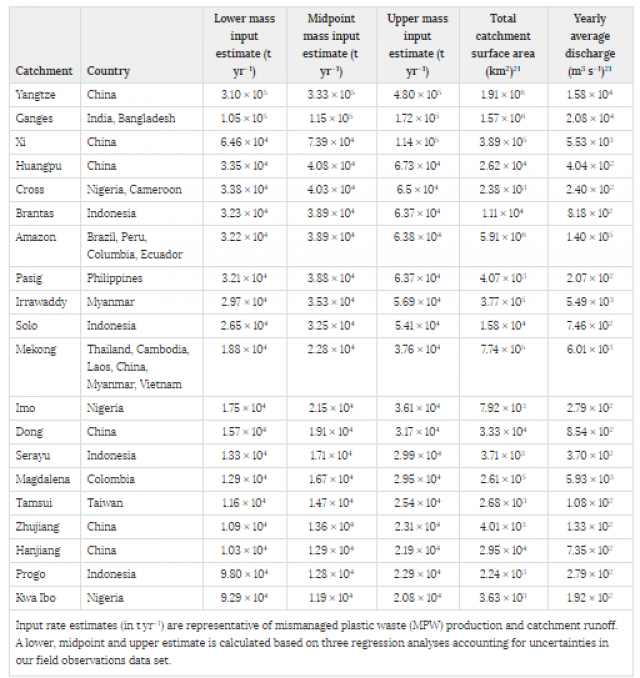Pasig River is world's 2nd biggest source of plastic waste for its size –study
The Pasig River dumps up to 63,700 tons of plastic—the equivalent weight of over 10,600 elephants—into the ocean each year, according to a recent study by researchers from the Netherlands and the US.
This makes the Pasig River the world's second worst contributor of plastic waste to the ocean, relative to its drainage area, and the eighth worst contributor overall in the world.
Even the most optimistic estimate for the Pasig River looks extremely grim: the minimum amount of waste from the garbage-filled waterway is pegged at 32,100 tons per year.
The study, published in the journal Nature Communications, is the first global assessment of how much inland populations contribute to ocean plastic through river systems, whereas previous research has focused mostly on just coastal populations—that is, people living within 50 km from shore.
Plastic trash affects everyone, everything
Plastic trash in the ocean is a worldwide issue. It is found in practically every habitat in the ocean, even the deepest trenches that humans have yet to explore. It affects not just the marine environment itself, but also the people who depend on the oceans for food and livelihood.
Animals such as fish, birds, and sea turtles are known to mistake plastic for food and to eat them, resulting in starvation and death. And even if the animals survive long enough to get eaten themselves, then their predators—including humans—are in danger of likewise ingesting the chemicals from the plastic.
Plastics reach the ocean through a number of ways, whether directly via aquaculture, shipping, and fishing activities, or indirectly via beach littering, discharged by rivers, or blown by the wind. However, land-based sources are considered to be the main contributors of plastics to the oceans.
Following the garbage trail
The researchers looked at the plastic load inputs from 40,760 watersheds around the world and used geospatial data on population density, Mismanaged Plastic Waste (MPW) production per inhabitant and per day in 182 countries, monthly catchment runoff, and the presence of artificial barriers such as dams in their global model. Plastic waste was considered "mismanaged" if it was littered or improperly disposed. "Catchment area" refers to the area of land where water collects and flows into a river, stream, or other body of water.
The model results show that 1.15 to 2.41 million tons of plastic currently into the world's oceans every year, with 67% of it coming from only 20 river systems. These rivers cover only 2.2% of continental surface area, but house 21% of the global population. Most of these top contributing rivers are in Asia:

Overall, Asian rivers were estimated to contribute 86% of the global plastic input to oceans. This is due to the perfect storm of high population density, large Mismanaged Plastic Waste production rates, and heavy rainfall during the monsoon season.
In terms of total contribution, the Yangtze River in China is the largest contributing catchment with 310,000 to 480,000 tons of plastic per year, followed by the Ganges River catchment at 105,000 to 172,000 tons per year. The Pasig River is the eighth-largest contributor, with 32,100 to 63,700 tons of plastic per year. However, the Yangtze and Ganges River have the 2nd and 3rd largest catchment surface areas, respectively, with the Amazon being the largest.
If the size of the catchment surface area is considered, then the Pasig River sends the second largest amount of plastic to the oceans, with a maximum estimate of 15.65 tons of plastic per year per square kilometer.
The researchers cautioned that these input estimates are actually conservative, as the published studies they calibrated their model against only considered plastics on the surface that are 0.3 mm to 0.5 meters in size. Plastics smaller or larger than this size range, or found suspended in the water column, were not included due to limitations of the sampling equipment used.
Nevertheless, thee results shockingly underscore the need to minimize plastic waste and for proper solid waste management, especially within the Pasig River catchment area. — TJD, GMA News

Need a wellness break? Sign up for The Boost!
Stay up-to-date with the latest health and wellness reads.
Please enter a valid email address
Your email is safe with us





